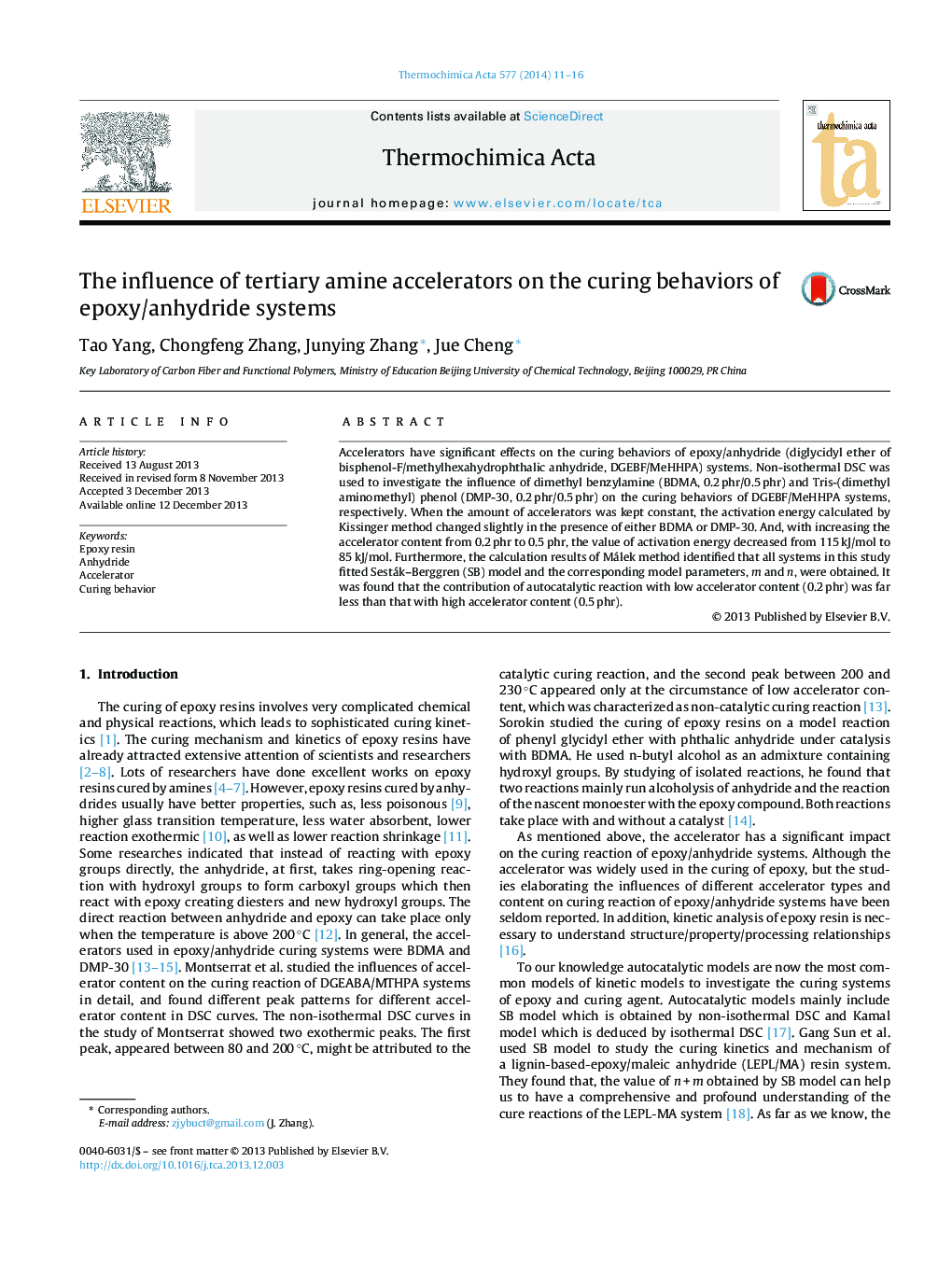| Article ID | Journal | Published Year | Pages | File Type |
|---|---|---|---|---|
| 673454 | Thermochimica Acta | 2014 | 6 Pages |
•The influences of two types of accelerators (BDMA and DMP-30) on curing reaction of DGEBF/MeHHPA systems were studied comparatively.•The activation energy and kinetic parameters of DGEBF/MeHHPA systems with accelerator content of 0.2 phr and 0.5 phr were calculated, respectively.•The dependence of autocatalytic and non-autocatalytic curing reaction on the loading of accelerators was discussed.•The non-catalytic curing reaction dominated absolutely in the curing process of DGEBF/MeHHPA systems when the accelerator contents were 0.2 phr.
Accelerators have significant effects on the curing behaviors of epoxy/anhydride (diglycidyl ether of bisphenol-F/methylhexahydrophthalic anhydride, DGEBF/MeHHPA) systems. Non-isothermal DSC was used to investigate the influence of dimethyl benzylamine (BDMA, 0.2 phr/0.5 phr) and Tris-(dimethyl aminomethyl) phenol (DMP-30, 0.2 phr/0.5 phr) on the curing behaviors of DGEBF/MeHHPA systems, respectively. When the amount of accelerators was kept constant, the activation energy calculated by Kissinger method changed slightly in the presence of either BDMA or DMP-30. And, with increasing the accelerator content from 0.2 phr to 0.5 phr, the value of activation energy decreased from 115 kJ/mol to 85 kJ/mol. Furthermore, the calculation results of Málek method identified that all systems in this study fitted Sesták–Berggren (SB) model and the corresponding model parameters, m and n, were obtained. It was found that the contribution of autocatalytic reaction with low accelerator content (0.2 phr) was far less than that with high accelerator content (0.5 phr).
